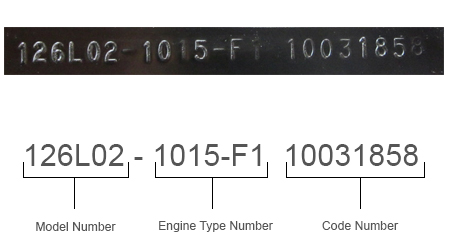CARB Certification
If an approved aftermarket catalytic converter test group number does not match a vehicle's engine family number, it may not be used in that vehicle as a replacement even if the component fits. An aftermarket CAT must posses a valid EO (executive order number) and must have been tested and approved for use with a specific engine family. Engine Family Number Test Group / Engine Family Search - CARB EPA Approved Engine Family Conversion List As of January 5, 2017 Engine Make Engine Model Engine Model Year Engine Family Number EPA Approval Type CARB Certified Caterpillar C-10 1996 TCP629EZDARK OUL Caterpillar C-10 1996 TCP629EZDARM OUL Caterpillar Page 13/27.
California Installation Requirements
Effective January 1, 2009, new aftermarket catalytic converters sold or installed in California must be designed to meet the following requirements:


- Aftermarket converters are required to last for 5 years/50,000 miles.
- Aftermarket converters for newer vehicles must be compatible with OBD II catalyst monitors. This includes making sure converters won't cause false catalyst fault codes, while also making sure that the OBD II system will correctly set a catalyst fault code if the aftermarket converter fails.
- The warranty must be for 5 years/50,000 miles and cover the cost of parts and labor if a replacement is needed. Determining the proper replacement converter for a particular vehicle takes a little research. This catalog will specifically indicate which converter models are legal for use in California and which exact vehicle models they may be installed on.
Service Provider’s Checklist for New Aftermarket Catalytic Converters
- The vehicle's emissions warranty for the OE converter has expired. Warranties range from 7 years/70,000 miles to 15 years/150,000 miles. Consult the owner's manual for details.
- The service provider has confirmed the need for a replacement catalytic converter. If the OEM converter is still present, a diagnosis that it is malfunctioning is required.
- The vehicle is specifically included in the application list for the catalytic converter, and the converter is legal for use in California.
- The replacement converter is installed in the same location as the OE converter (the front face location will be within three inches compared to the OE).
- All oxygen sensors will remain installed in their OE location(s).
- The catalytic converter is installed on a 'one-for-one' basis (a new converter is installed for each OE converter being replaced). Decreasing or increasing the number of catalytic converters (compared to the OE configuration) is prohibited.
- The Converter Warranty Card is completed– The Service Provider must:
- Fill out the warranty card
- Obtain the customer's signature on the card
- Give the original to customer
- Attach a copy to the original repair invoice
- Return the pre-paid postage copy of the warranty card to the catalytic converter manufacturer
- The service provider must file and maintain a copy of all documentation for a period of at least four years from the date of installation
ATTENTION: Under California regulations, it is illegal to install a catalytic converter based solely on physical shape, size, configuration or pipe diameter. See the Walker CalCat catalog application section for specific part numbers for a specific vehicle.
Search by Executive Order Number
Search California Air Resource Board's Aftermarket Converter Database by vehicle or by executive order number with this handy search tool.
Engine Family Number
In order to determine which catalytic converter to use on a vehicle application, it may be necessary to verify the specific vehicle emissions system that was installed by the Original Equipment Manufacturer. This information is included on the Vehicle Emission Control Information (VECI) label required by the United States Environmental Protection Agency (see examples below). This label is located in the engine compartment in a visible position on the hood underside, shock tower, radiator support, fan shroud or firewall.
The label will provide the Engine Family Number (EFN, also known as the Emission Family Code or Test Group Number) and other important emissions specifications. All OBDII applications in this catalog refer to the EFN. Be sure to verify your EFN to avoid misapplication of the catalytic converters in this catalog. If the label is missing, it will be necessary to contact the OE dealer for the information, or to order a new Emission Control Information Label.

Learn more about quality exhaust parts, find the right car part, or find a local repair shop today.

Cat Engine Family Number Lookup Yellow Pages
The content contained in this article is for informational purposes only and should not be used in lieu of seeking professional advice from a certified technician or mechanic. We encourage you to consult with a certified technician or mechanic if you have specific questions or concerns relating to any of the topics covered herein. Under no circumstances will we be liable for any loss or damage caused by your reliance on any content.
